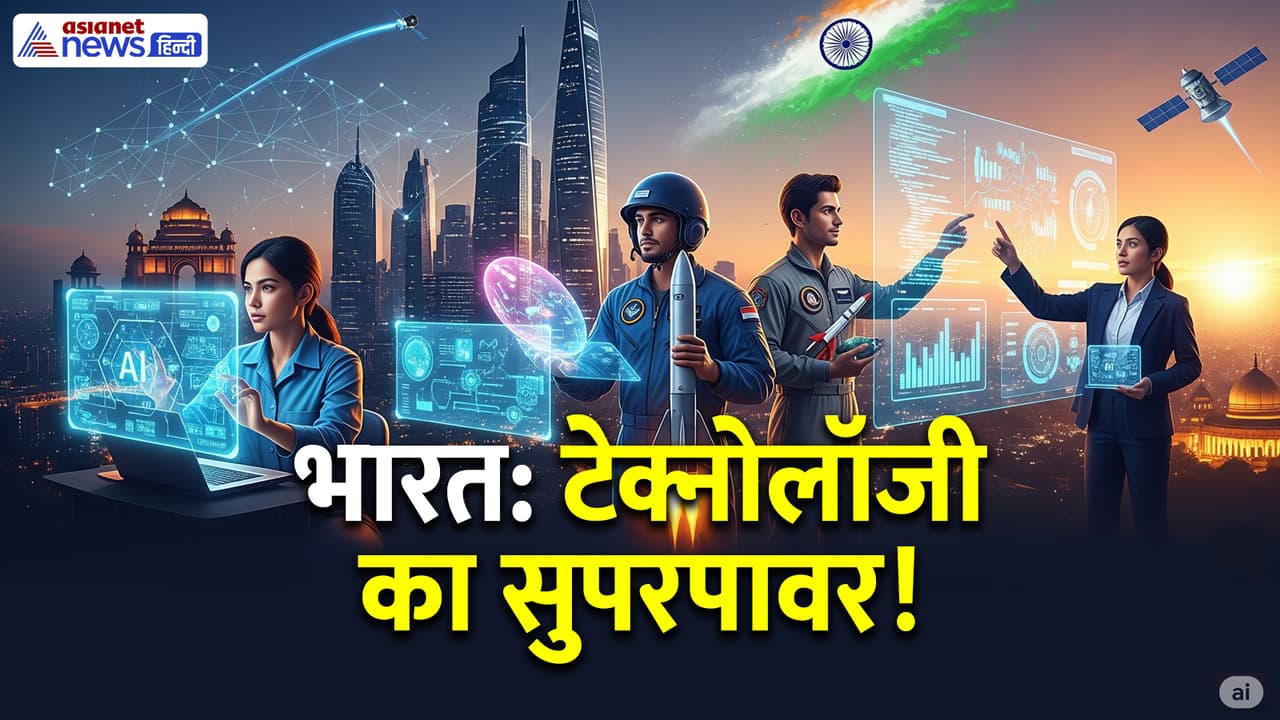Bharat Tech Revolution Journey: From 1947 to 2025, India has achieved many big places in the world of technology. From the first satellite Aryabhatta to Quantum Communication, India has become a global leader in Space, Digital Payment, Healthtech, AI and Startup Innovation.
Independence Day 2025 Tech Story: When our country became independent on 15 August 1947, we had very few things in the name of technology. There was neither internet, no mobile, no TV, satellite nor computer. But today in 2025 we are going to celebrate the 79th Independence Day, then India has become a technology powerhouse. A country that creates its own technology, sends satellites in space, and is also showing a new path to the world. On this Independence Day, let us know the changes of 10 big technology, which made India ‘local to global’ …
First satellite ‘Aryabhatta’, India starts in space
India’s first satellite Aryabhata was launched on 19 April 1975 with the help of the Soviet Union. This was the first step in the world of space science. Today, India has launched hundreds of satellites by 2025. ISRO’s mission Chandrayaan-1 to Chandrayaan-3 (2023) gave India a distinct identity worldwide. Now many space missions like Gaganyaan (can be launched in 2027) are going on.
Also read- Inodependence day gift: run internet for just ₹ 1 unlimited, learn offer
Computer studies started in schools
The Government of India started bringing computers to schools under the National Policy on Education (1986). Then the computer class was a new concept. India is among the world’s largest IT talent hubs in 2025. According to Nasscom Report 2024, more than 5 million software professionals, $ 250 billion IT exports.
Internet came to India
On 15 August 1995, internet service started through Foreign Communications Corporation Limited (VSNL) for the first time in India. Its initial speed was only 9.6 kbps. According to TRAI’s June 2025 report, today there are 96.91 crore internet users in the country in 2025. India is the world’s largest data consumer.
UIDAI starts, first step of digital identity
The idea for digital identity began in 2004 and Aadhaar was launched in 2009. According to the United Nations Population Fund, by April 2025, India has a total population of 146.39 crore, while 142.39 crore people have received the Aadhaar card. This made services like LPG subsidy, banking, EKYC, admission in schools easier.
UPI: Payment starts from mobile
On 11 April 2016, NPCI launched UPI (Unified Payments Interface). The National Payments Corporation of India (NPCI) released a figure in August 2025 itself, stating that now more than 70 crore UPI transactions are being done in the country. On August 2, 2025, for the first time, more than 70.7 crore transactions took place in a day. Apart from India, now UPI is active in countries like Singapore, France and UAE.
Digital treatment begins in Kovid epidemic
Aarogya Setu App, Cowin Portal, Telemedicine brought tremendous changes in Healthtech during Kovid. More than 100 million vaccinations occurred in digital way between 2021-22. According to some reports, in 2025, India’s telemedicine market may cross $ 5.5 billion.
Also read- Independence Day: India did not get full independence in 1947, know why
India starts its own chip and electronics mission
In December 2021, Prime Minister Narendra Modi gave the green signal to an initiative called Semcon India. Its purpose is to carry forward the semiconductor and display -making industry in India. For this, the government kept a fund of Rs 76,000 crore, so that companies which invest in this sector can get financial help. It emphasizes on strengthening chip design, display unit and entire technology structure. In 2023, Micron, Tata and Vedanta started setting up chip plants in India. According to industry reports, India’s semiconductor market stood at around $ 38 billion in 2023. It is believed that between 2024 and 2025, this size can increase from $ 45 to 50 billion. If the growth continues at this speed, by 2030 this market can be between $ 100 and 110 billion.
Work starts on 5G launch and 6G
5G service was launched in India on 1 October 2022. According to the report till March 2025, 99.6% districts have reached 5G and a total of 25 crore mobile subscribers are using this network. Apart from this, work is going on at 6G standard in the country, which can start by 2030.
India is the third largest startup country in the world
In 2021, India crossed the 50,000 startups mark. According to DPIIT data, more than 1.59 lakh startups have been registered so far in 2025. Out of these, there are more than 100 unicorn, with more than 1 billion dollars, which are leading in AI, Spacetech, Agritech and Edtech. Many are also working on robotics, blockchain and deptack. India has become the third largest startup ecosystem in the world.
DNA Technology and Genome India Project
The Government of India started the ‘Genome India Project’ in 2020 and by 2024 more than 10,000 Indians have been sequenced. Due to this, the treatment of cancer, diabetes and genetic diseases is becoming more accurate than before.
